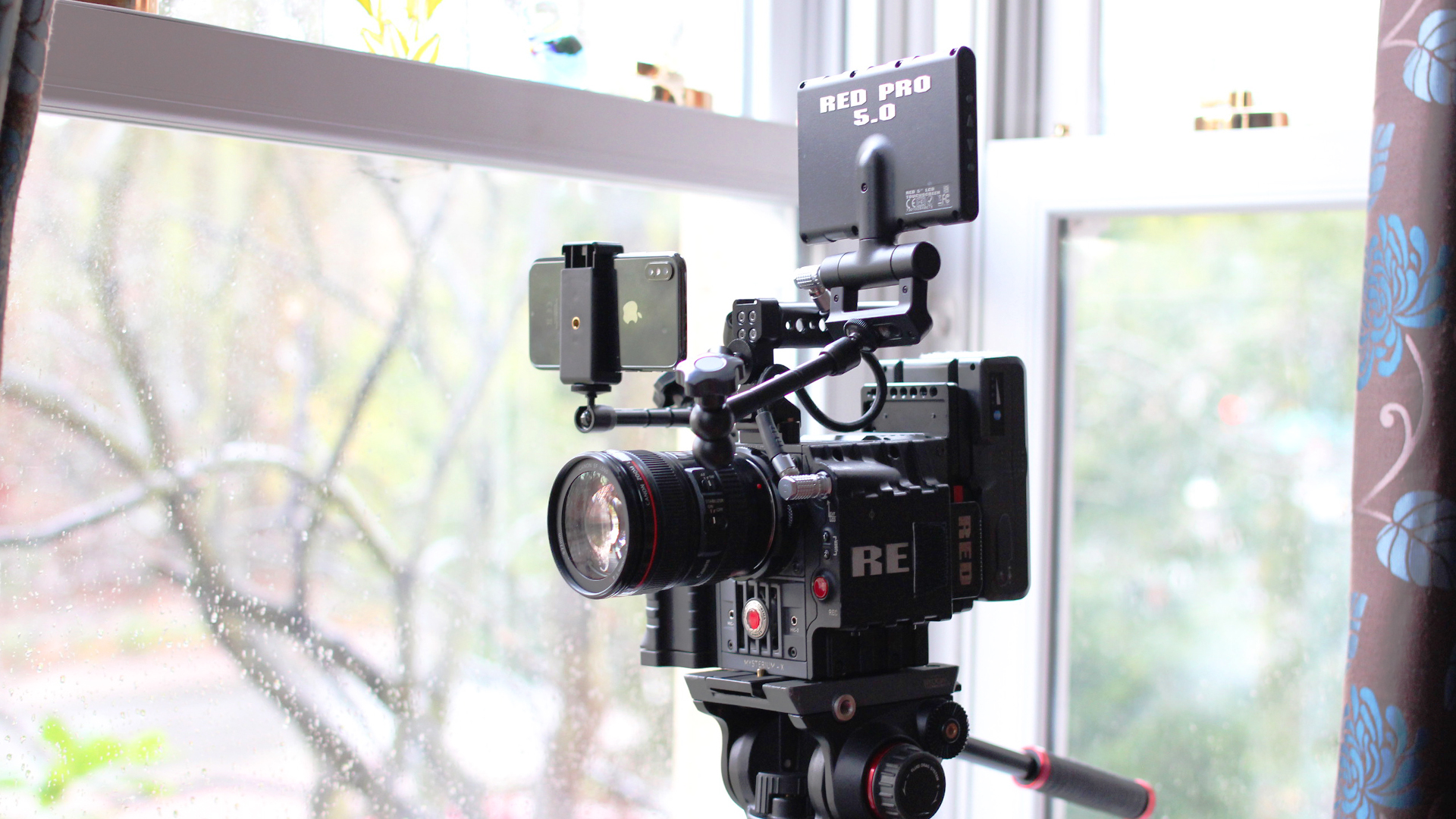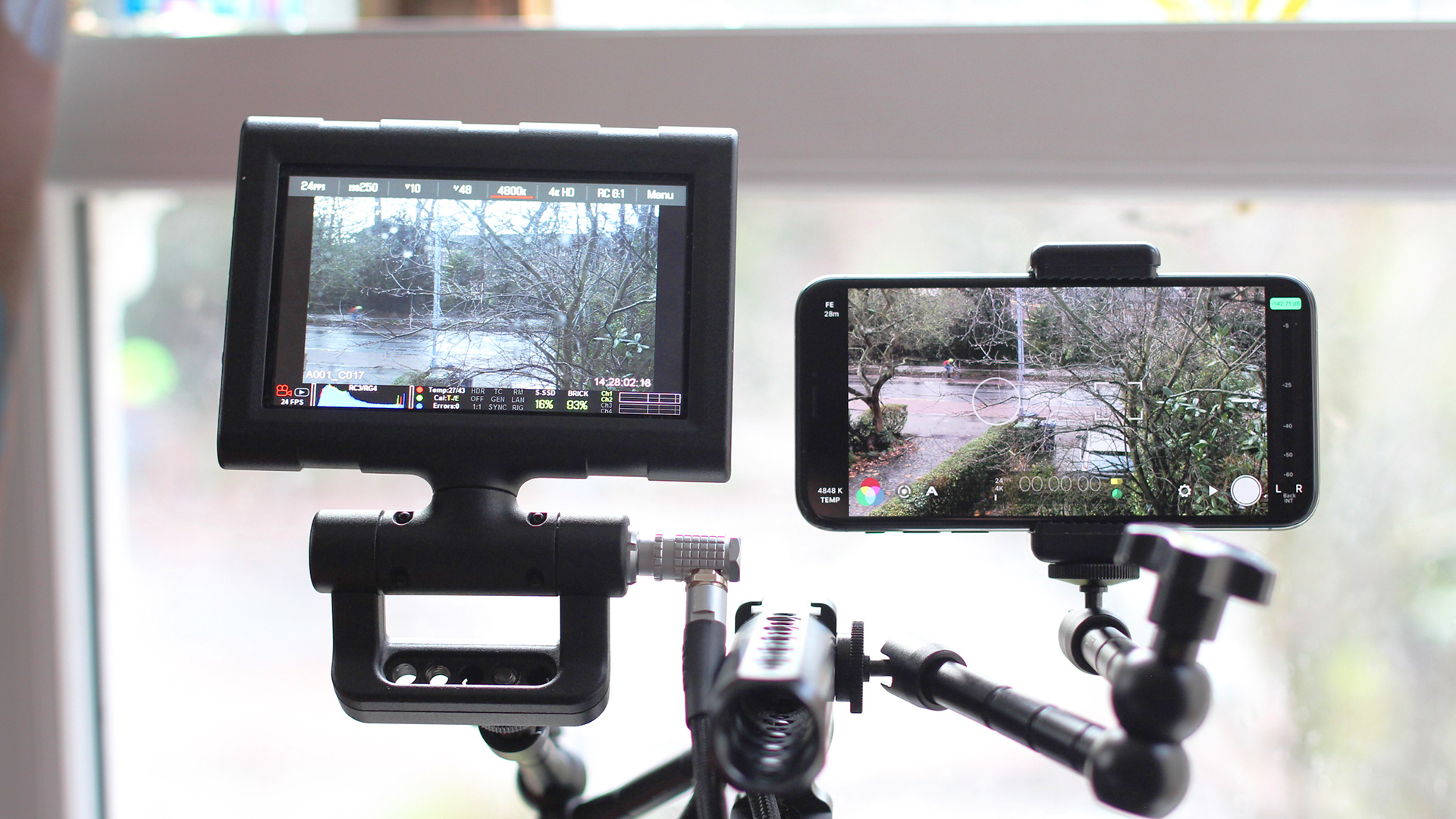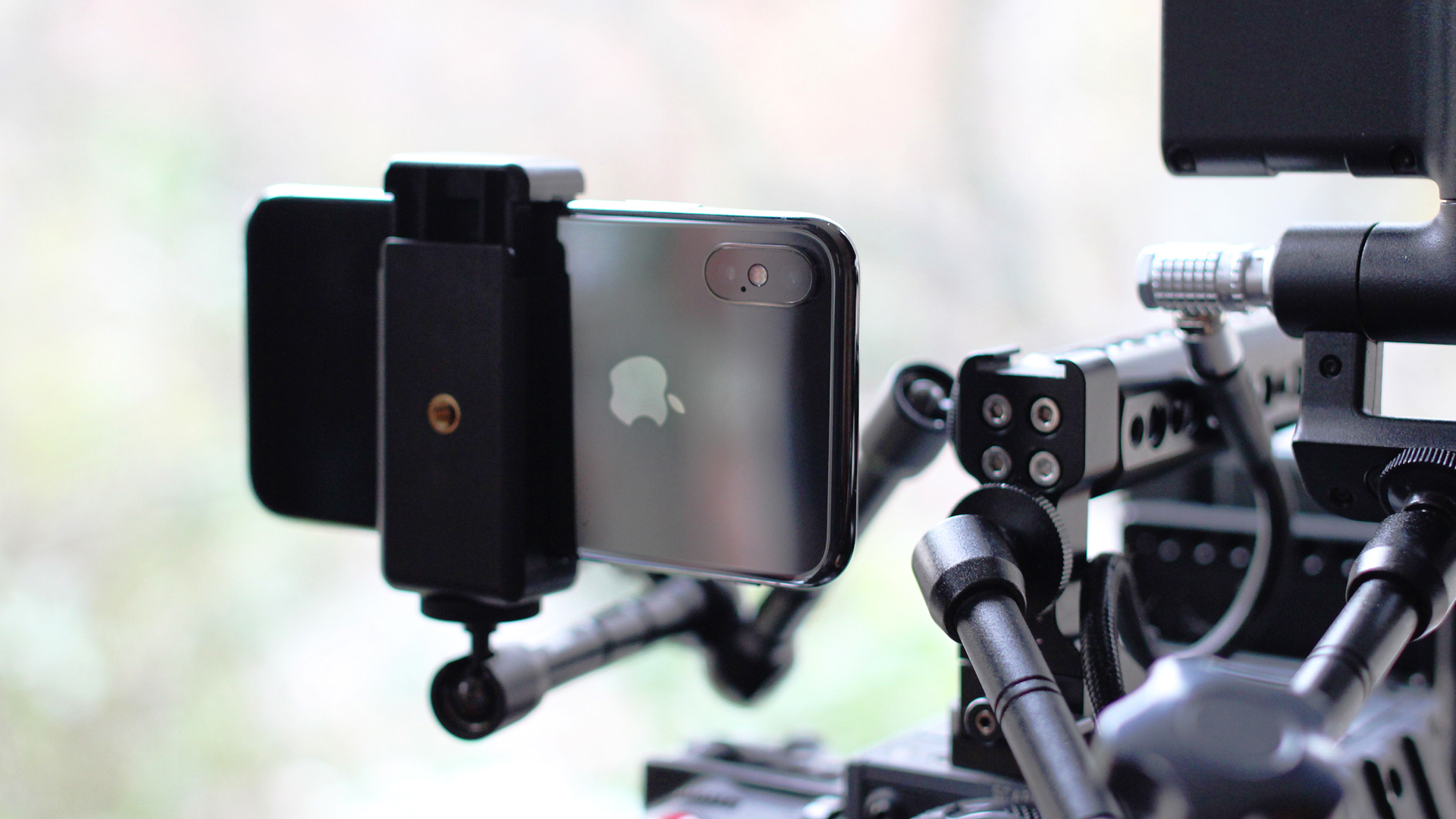Spoiler alert! The video above includes the results of our iPhone X vs Red Scarlet-X test, so before watching it read on to learn more about our two contenders, and how we conducted the test.
Smartphone cameras have seriously improved over the last few years, putting high-quality video recording into the hands of professionals and non-professionals alike.
The iPhone X is one of the best when it comes to smartphone video capture, but just how far has recording on our handsets come?
We took to the streets of Cambridge to shoot with the iPhone X and the Red Scarlet-X, an pro-level video camera used to shoot feature films, for a side-by-side comparison in an attempt to find out.
Disclaimer: We’re aware this is far from a ‘fair’ test. The two devices are designed to be used for very different reasons, and the price difference is huge. This test is to see just how far smartphone cameras have come – and you may be surprised by some of the results.

Hardware: phone vs cinema cam
The iPhone X is capable of recording 4K video at up to 60fps, technology that was once only available in professional-level cameras. The 12MP dual cameras around the back have optical image stabilization, which helps minimize camera shake making for a smooth shot. The primary camera has an f/1.8 aperture wide-angle lens, while the secondary camera has an f/2.4 2x zoom lens – both great for allowing more light to hit the sensor, and especially useful in dark scenarios.
The Red Scarlet-X is a professional cinema camera from Red Digital Cinema. Red has been making digital cameras since the original Red One released in 2008, and its cameras have had a huge impact on modern digital cinematography.

The Scarlet-X is one of Red’s older cameras, introduced in 2011, featuring a previous-generation Mysterium X sensor, and shoots beautiful raw video in 4K.
It's a pretty cumbersome, and pretty expensive, setup. It's now discontinued, but a second-hand rig, including lens, batteries and storage, will set you back in the region of $ 6,000 (around £4,500 or AU$ 7,500).
Meanwhile, as expensive as the iPhone X is for a phone at $ 999 / £999 / AU$ 1,579, it’s a good deal cheaper than the Scarlet-X, and it's a complete and obviously much more compact solution. Perhaps the only accessory you’ll need in addition to a tripod is a power bank to keep your battery topped up.
Red specifics
Red takes pride in the modularity of its cameras, making custom rigs possible, but the downside of this is that you need multiple pieces of kit to make the camera work, which adds to the cost. We kept our setup simple with a 5-inch Red touch monitor, 64GB SSD, V-Mount battery and a Canon 24-105mm L lens.
The Red shoots in a very flat picture style, designed to be color-graded in post-production to draw the most detail from the shadows and highlights. This allows a good deal of flexibility, as the user can completely change the mood of the shot. For casual users posting to social media though, this may be a hindrance, as images straight out of the camera will lack any 'pop'.

It’s clear that the Red camera is better geared for cinema, but that doesn’t mean an iPhone can’t shoot a movie. Filmic Pro claims that with its app, which we used for this comparison, a phone can create video that holds up on a cinema screen.
In fact, some filmmakers have already dived into the world of smartphone filmmaking. Most notably, the film Tangerine was shot entirely on an iPhone 5S, and later premiered at the Sundance film festival. It looked very impressive, although it still maintained a noticeable camera phone aesthetic.
Shooting setup
We filmed with both cameras side-by-side, capturing various 4K shots in beautiful Cambridge. The goal wasn’t to prove how the Scarlet-X is better, but more to see how well the iPhone footage holds up in comparison.
Using a magic arm, we rigged the iPhone above the Red’s lens so the two lenses where as close together as possible, then filmed at the same time. Due to the Red’s flat picture style, we color-graded its footage to align more closely with the iPhone's.
Apple’s included camera app has been designed for a basic point and shoot experience. This comes with limitations as it lacks manual controls, therefore a third-party camera app such as Filmic Pro is recommended.
Filmic Pro allows 100Mb/s recording. It’s not free, though – it'll cost you £14.99 / $ 14.99 / $ 22.99 to download it from the App Store.

We wanted to see how well the cameras performed in different scenarios. Starting with shots designed to test detail and dynamic range, we shot in bright sun with varying levels of light, and captured wide-shots and mid-shots, and buildings and faces, to make sure the cameras were properly put through their paces.
We also tested the low-light capabilities of each camera, and while this round in particular might seem like a foregone conclusion, don’t count your chickens – the results were quite surprising despite the iPhone sporting such a small sensor and lens combination.
Lastly, we tested stabilization by walking with the cameras in a straight line. This was to see how well each camera handled the natural shake from the user's hands. The Red camera doesn't have optical image stabilization, but the lens we were using did.
The results
And so to the results. TechRadar’s video producer, Basil Kronfli, reviewed the footage blind, not knowing which images were from which camera. He offered his thoughts, which you can see in the video at the top of the page, and was very impressed with how well both cameras performed.
To blind-test the cameras yourself, watch the video on mute, then play it back with Basil’s commentary. Hopefully you’ll be as impressed and surprised as we were by the capabilities of Apple’s all-in-one pocket camcorder.